Ship Wreck 1987
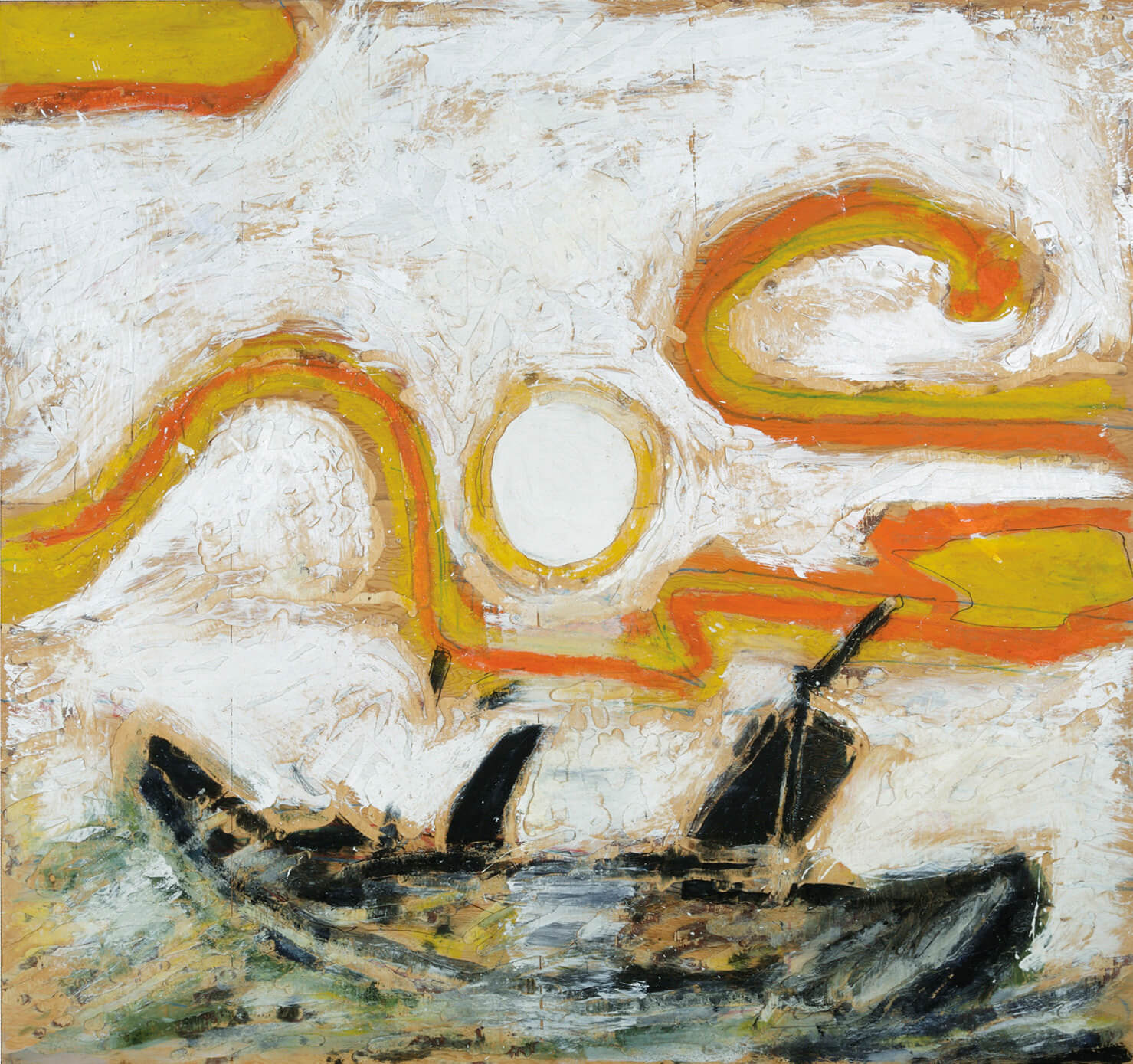
Paterson Ewen, Ship Wreck, 1987
Acrylic on gouged plywood, 229 x 243.6 cm
Museum London, Ontario
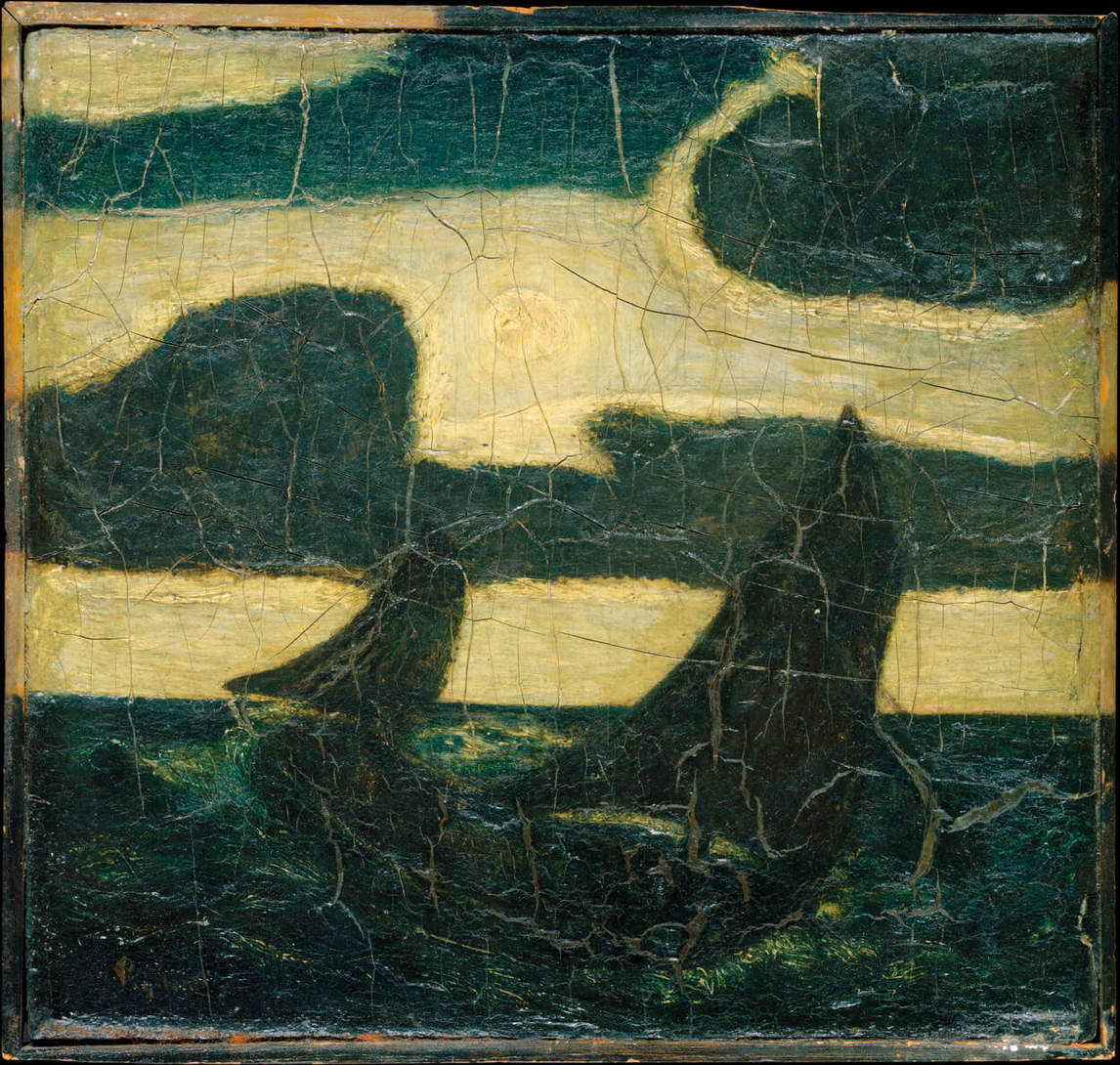
Ship Wreck is the most traditional and thus most accessible of all Paterson Ewen’s landscapes. At the bottom of this gouged plywood work is a rough black outline sketch of a ship with two smokestacks or masts under a white sky, with the moon and curvilinear reddish orange and yellow lines meandering across it. Shown in his first major solo exhibition hosted by the Art Gallery of Ontario, Toronto, in 1988, it references the broad-stroked cloudscapes of the Romantic painter J.M.W. Turner (1775–1851) and the sketchy seascapes of his contemporary John Constable (1776–1837). This work firmly enshrines Ewen in the lineage of these great landscape artists.
In the mid to late 1970s, Ewen abandoned his diagrammatic depictions and began to paint more traditional landscapes. He seems to have been revisiting the works of the European masters, either through looking at catalogues or visiting collections, and his works between 1977 and 1987 reference many of them. For example, Typhoon, 1979, is indebted to Turner’s Snow Storm—Steam-Boat off a Harbour’s Mouth, 1842, and Sunset over the Mediterranean, 1980, looks to Impression—Sunrise, 1872, by Claude Monet (1840–1926). Ship Wreck appears to be a tribute to Moonlight Marine, 1870–90, a work on wood panel by the American Albert Pinkham Ryder (1847–1917). In Ryder’s image, a two-masted sailboat, barely visible, perches above dark, swirling waves, with clouds glowing in the moonlit sky. The palette is sombre, focused mainly on tones of blue-green and white. In Ewen’s painting the palette is brighter but the overall effect is equally ominous.

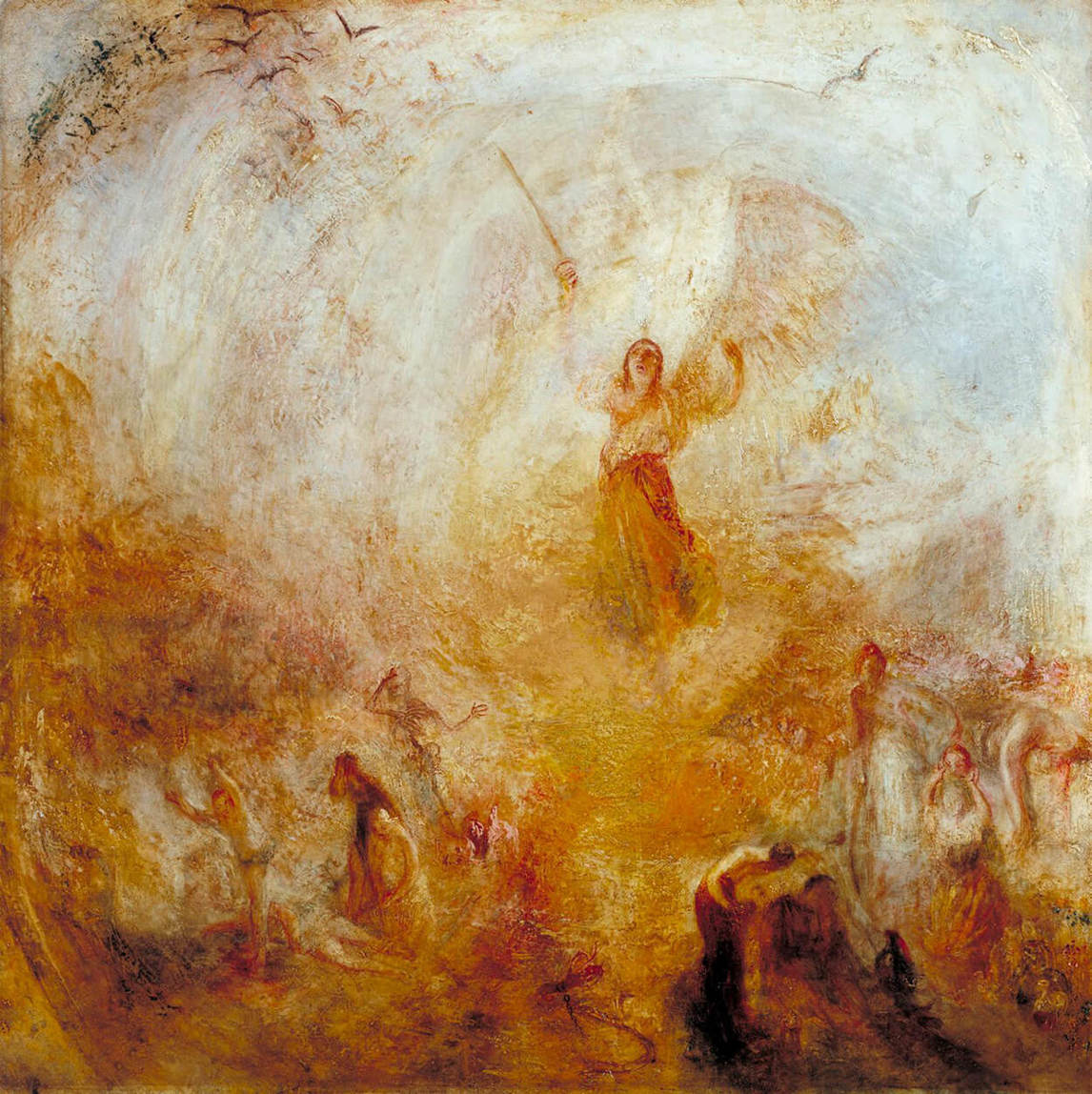
Like most of Ewen’s works from this period, the moon appears as a central image over a vast expanse, a solitary element that speaks of an intense loneliness or isolation. In many of these images, such as Moon over Tobermory, 1981, and Moon over Water II, 1987, the moon is a piece of metal that has been cut out and literally hammered onto the scene, and its spray-painted surface seems to capture the ambient light and observe the action without actually illuminating it. Nor does the rough surface of the plywood moon in Ship Wreck permit the subtleties of light that would usually allow the viewer to make sense of the space in the image. Furthermore, when seen in person, this massive work affords little sense of depth, except what the mind fills in between the sea and the sky. This effect is reminiscent of Paul Cézanne (1839–1906), whose works give an initial impression of three-dimensionality that is gradually undermined, flattened, with further study. Here the viewer’s focus turns to the materiality of the painting, and as it often does in Ewen’s work, the vigorously sculpted surface echoes the painting’s dynamic subject matter.
The theme of the shipwreck is not surprising given that 1986–87 was a very difficult time for Ewen after a long period of relative tranquility. His companion, Mary Handford, had moved to Waterloo, Ontario, to study architecture, and they broke up in July 1986 because Ewen was having trouble handling the long-distance relationship. Around this time, Ewen checked himself into an alcohol treatment centre in Guelph, Ontario, and eventually into St. Joseph’s Hospital in London. The shipwreck may also reference Tobermory, on Georgian Bay in Ontario, where Ewen vacationed once and which is famous for its nautical wrecks.

 About the Author
About the Author
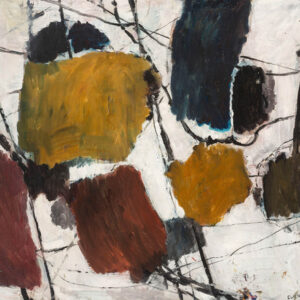 More Online Art Books
More Online Art Books
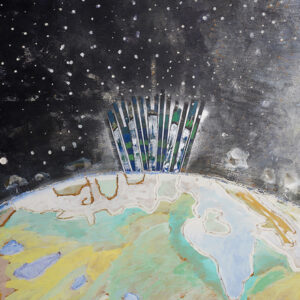 Acknowledgements
Acknowledgements